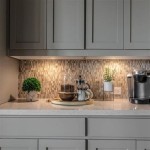Essential Aspects of the Best Black Stain for Kitchen Cabinets
Upgrading your kitchen cabinets with a sleek black finish is a stylish and sophisticated choice. To achieve the perfect result, selecting the best black stain is paramount. Here are essential factors to consider when embarking on this project:
1. Wood Compatibility
Wood species and their grain patterns directly impact the final appearance of the stain. Hardwoods like oak, maple, and walnut showcase distinct grain patterns that may enhance or detract from the black finish. Softwoods, on the other hand, tend to absorb stains more evenly, resulting in a more solid color.
2. Stain Type
Oil-based stains penetrate deeply into the wood, providing a rich, durable finish. Water-based stains are less toxic and easier to use but offer less resistance to wear and tear. Gel stains are ideal for creating a thick, opaque layer of color, perfect for covering imperfections or contrasting with the wood grain.
3. Pigment Concentration
The concentration of black pigment in the stain determines the intensity and opacity of the finish. Low-pigmented stains allow the wood grain to show through, while high-pigmented stains create a solid, ebony-like surface. Consider the desired look before making a selection.
4. Sheen Level
The sheen level of the stain affects the overall appearance and practicality of the cabinets. Glossy finishes create a dramatic, reflective surface that highlights imperfections but is easy to clean. Semi-gloss finishes provide a balance between aesthetics and practicality. Matte finishes offer a subtle, no-shine look that conceals imperfections but may trap dirt.
5. Durability
For kitchen cabinets that endure regular use and cleaning, durability is essential. Look for stains with a high resin content that protects against scratches, stains, and moisture. Water-resistant stains are also recommended to withstand spills and humidity.
6. Green Certification
If eco-friendliness is a concern, opt for stains with low or zero VOC (Volatile Organic Compounds) emissions. Green-certified stains contain fewer harmful chemicals and are better for your health and the environment.
7. Application Method
Different stains require specific application methods. Use a brush or roller for oil-based stains, a sponge or cloth for water-based stains, and a squeegee for gel stains. Follow the manufacturer's instructions carefully to ensure a smooth, even finish.
8. Testing and Preparation
Before staining the entire cabinet, test the stain on an inconspicuous area to gauge the color and sheen. Clean the cabinets thoroughly to remove dirt and debris. Sanding may be necessary to smooth the surface and enhance stain absorption.
9. Multiple Coats
For a deep, rich black finish, multiple coats of stain may be required. Allow each coat to dry thoroughly before applying the next. Sand lightly between coats to ensure a smooth, even surface.
10. Sealer
Once the stain is dry, apply a sealer to protect the finish and make cleaning easier. Choose a sealer compatible with the stain type and desired sheen level. Lacquer, varnish, or polyurethane are commonly used sealers for kitchen cabinets.

Staining Cabinets Love This Stain The Stonybrook House

Which Types Of Wood Look Best With Espresso Stain

Black Kitchen Cabinets The Ugly Truth At Home With Barkers

The 10 Best Black Paint Colors For Kitchen Cabinets

Stained Black Shaker Kitchen Cabinets Solid Wood Base And Wall Elegant Contemporary Farmhouse Style Cabinetry Free Quote

The 10 Best Black Paint Colors For Kitchen Cabinets

Staining Your Wood Cabinets Darker Young House Love

Staining Cabinets Love This Stain The Stonybrook House

Black Kitchen Cabinets A Bold Color Choice That Always Works The Creek Line House

Black Kitchen Cabinets The Ugly Truth At Home With Barkers








